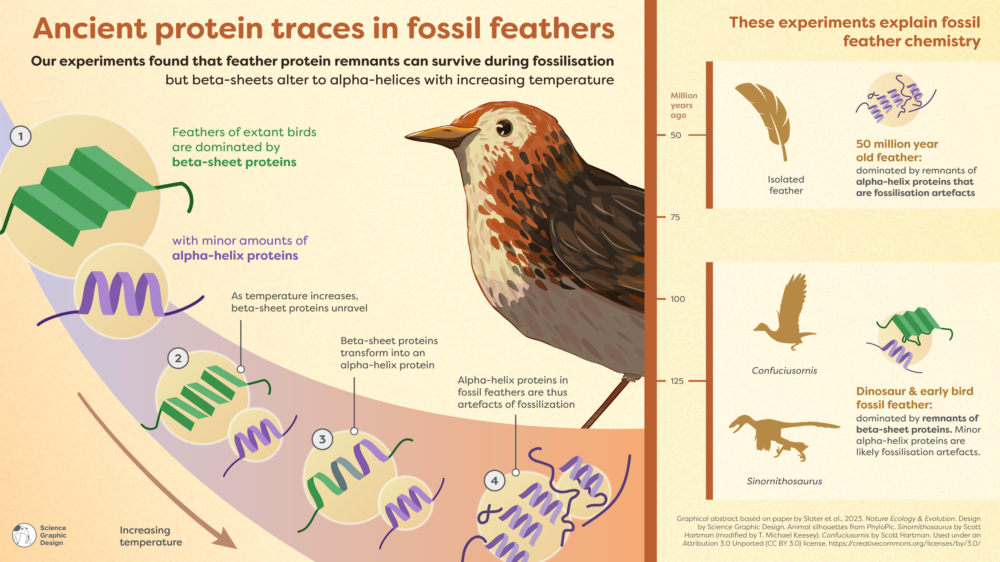125 million-year-old dinosaur feathers were remarkably similar to modern bird feathers, analysis reveals
A new X-ray analysis of dinosaur feathers shows that their chemical structure is similar to that of modern bird feathers.

Feathers from modern-day birds have more in common with dinosaur feathers than experts previously thought and have a similar protein composition, a new X-ray analysis reveals. The discovery offers new insight into the evolution of feathers over hundreds of millions of years.
Paleontologists examined feathers from three ancient animals, including a 125 million-year-old nonavian dinosaur called Sinornithosaurus found in China; a 125 million-year-old early bird, also from China, known as Confuciusornis; and an unspecified species that lived in what is now the Green River Formation in Wyoming 50 million years ago, according to a study published Sept. 21 in the journal Nature Ecology and Evolution.
After conducting X-ray and infrared light analyses on the ancient feathers, the researchers detected traces of corneous beta-proteins (CBPs), formerly known as beta-keratins, which are proteins necessary for strengthening feathers for flight. The international team of researchers then examined feathers from today's birds, such as zebra finches (Taeniopygia) and noticed that they contained a similar chemical structure.
Related: Scientists changed scales on chicken feet to feathers by tweaking a single gene
"These same beta proteins are also present in modern bird feathers," lead study author Tiffany Slater, a postdoctoral researcher of paleobiology at University College Cork in Ireland, told Live Science.

Prior to this study, scientists thought ancient animal feathers had a completely different protein composition and were primarily composed of alpha proteins, which aren't as strong as CBPs. However, this new study showed that not only were the old feathers mainly made up of CBPs but that those proteins transformed into alpha proteins during fossilization, according to a statement.
"The dinosaur feathers we analyzed show that they mostly consist of beta proteins," Slater said. "So, the original report that ancient feathers were predominately composed of alpha proteins was likely an artifact of fossilization."
Sign up for the Live Science daily newsletter now
Get the world’s most fascinating discoveries delivered straight to your inbox.
This new thinking not only shows that proteins can remain preserved in the fossil record for upward of 125 million years but also provides new thinking into the evolution of ancient feathers by "pushing the time scales a lot further than what we thought," Slater said.
"The chemistry of modern-day feathers is actually a lot more ancient than we previously thought," Slater said. "Our research helps rewrite the narrative and shows that the very basic building blocks that are required for powered flight were present at least 125 million years ago."
Jennifer Nalewicki is former Live Science staff writer and Salt Lake City-based journalist whose work has been featured in The New York Times, Smithsonian Magazine, Scientific American, Popular Mechanics and more. She covers several science topics from planet Earth to paleontology and archaeology to health and culture. Prior to freelancing, Jennifer held an Editor role at Time Inc. Jennifer has a bachelor's degree in Journalism from The University of Texas at Austin.









